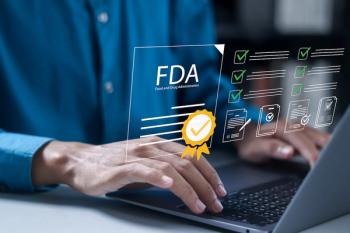
Improving Outcomes-Based Managed Entry Agreements for SMA Therapy
Innovative therapies for rare diseases such as spinal muscular atrophy (SMA), when paid for by public budgets in the European Union and elsewhere, are often managed by agreements between payers and drug companies, but details can be hard to discern.
A recently published study examining the use of outcomes-based managed entry agreements (OBMEAs) in the European Union (EU), Australia and Canada for nusinersen in
However,
SMA treatment and CAR T-cell therapy are both innovative and costly therapies. The EU, Australia, and Canada conduct health technology assessments or other analyses for treatments that have a financial impact on health budgets, either on an individual level or a population level.
Nusinersen is an antisense oligonucleotide that consists of a series of injections, which continue depending on the response.
Tisagenlecleucel, a chimeric antigen receptor (CAR) T-cell therapy, is a 1-time cell therapy approved in the European Union for refractory/relapsed B-cell acute lymphoblastic leukemia in patients up to age 25 or for adults with relapsed/refractory diffuse large B-cell lymphoma.
The researchers said the goal of their work was to identify best practices that could factor into methods that implement OBMEAs, as well as encourage widespread collaboration and information sharing.
They chose nusinersen and tisagenlecleucel as they represent different types of disease, type and class of therapy, and intended treatment population.
Drawing on previous work from the United Kingdom and Italy that reviewed how evidence coverage is used for medical devices, the researchers queried those involved in health technology assessments, payer experts, market access experts, and academics to compile what is known about how OBMEAs are used for these 2 therapies.
The authors noted that finding information about these agreements and what they contain is difficult, sometimes due to the fact that confidential commercial information is involved.
The responses they received discussed how countries were implementing OBMEAs and what was being done to overcome challenges. The OBMEAs based on individual outcomes were aimed at ensuring appropriate use and manage treatment continuation; in 2 cases they were linked to payment schedules. Population-based agreements included coverage with evidence development.
For nusinersen, population-based OBMEAs are in Belgium, England and the Netherlands, while Bulgaria, Ireland, Italy and Lithuania used individual-based agreements. The individual-based agreements sometimes included budget caps that were used in pricing and reimbursement renegotiations.
A few other countries in the EU provided nonspecific information about their OBMEAs because of confidentiality issues. Countries with decentralized systems, such as Canada, have confidential agreements as well.
Australia, France, Germany, Hungary, Norway and Slovenia covered nusinersen without entry agreements but may have used strict criteria regardless, the authors said.
For tisagenlecleucel, Australia, Belgium, England and France used population-based agreements and Italy and Spain used individual-based ones.
When it came to establishing an OBMEA, only England and the Netherlands included patients in the process; for the most part, these agreements were generally struck between the marketing authorization holder and the payer.
Most countries are attempting to collect data about these treatments for ongoing evaluation but the quality of the systems and platforms being used are variable, as is the type of information being collected. Only England, the Netherlands, and Spain intended to capture patient-reported outcomes.
“The processes to ensure data quality, completeness and sufficiency for re-analysis after coverage with evidence development were not always clear, neither were analysis plans,” the authors noted.
Implementing OBMEAs were found to be burdensome; to encourage transparency and reduce duplicative work, the authors said it would be ideal to create an international public portal for these agreements and related data, including the sharing of interim and final reports.
Reference
Facey KM, Espin J, Kent E, et al. Implementing outcomes-based managed entry agreements for rare disease treatments: Nusinersen and tisagenlecleucel. Pharmacoecon Open. Published online July 7, 2021. doi: 10.1007/s40273-021-01050-5
Newsletter
Stay ahead of policy, cost, and value—subscribe to AJMC for expert insights at the intersection of clinical care and health economics.












































